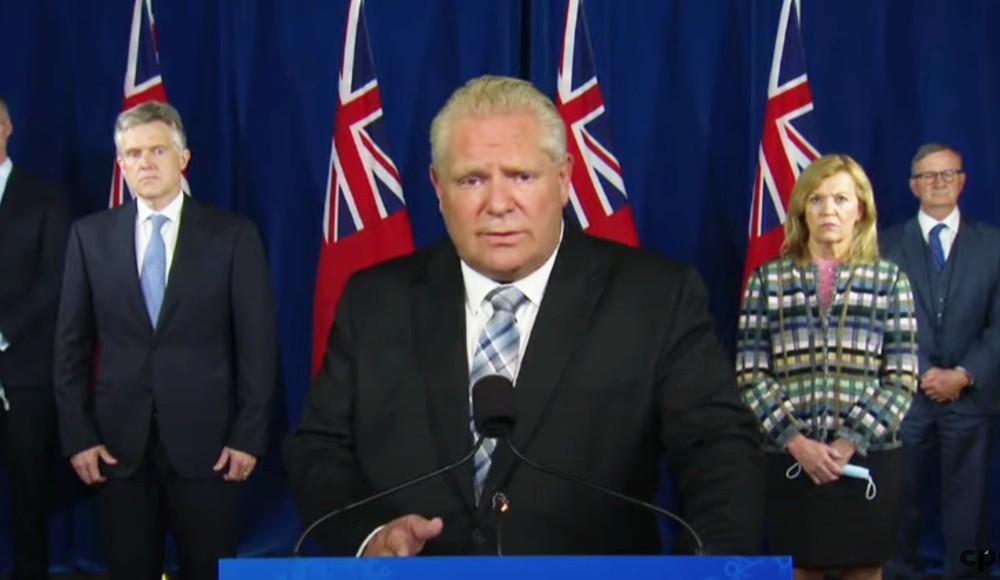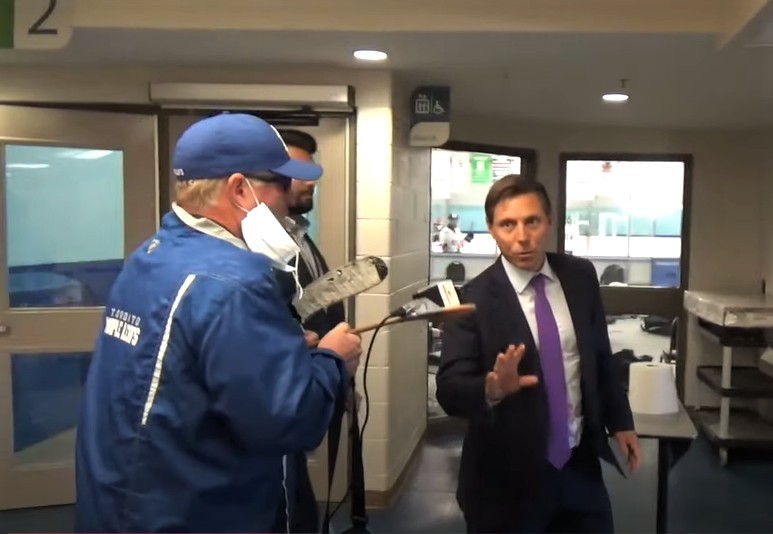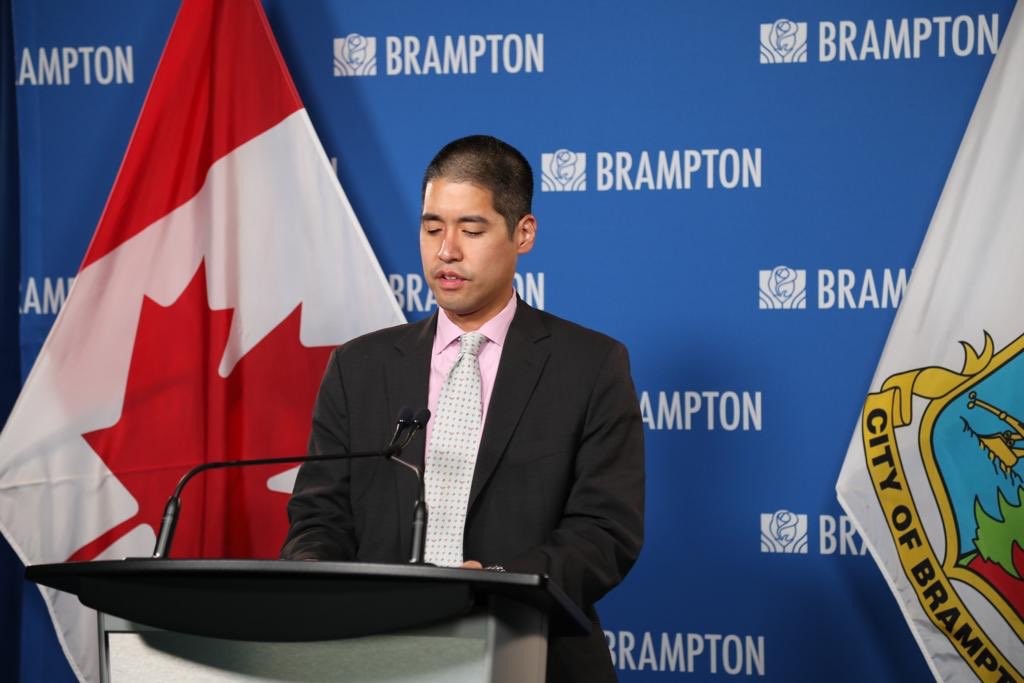
Afters weeks of confused messaging, Peel sent back to 'modified' lockdown
(Clarification: An earlier version of the article mentioned events attended by Mississauga Mayor Bonnie Crombie recently posted on her Twitter account that actually took place prior to the pandemic.)
On Friday, Ontario’s top health officials had one message for the residents of Peel, Ottawa and Toronto. Their efforts to follow public health protocols to limit the spread of COVID-19 during Stage 3 have been abysmal.
Some leaders in Peel have also failed to take responsibility.
A stern Dr. David Williams, Ontario’s chief medical officer of health, expressed his disappointment with the three regions, and the dramatic resurgence of COVID-19. “A number of people have not been responsible,” he said, wagging a metaphorical finger at those directly responsible for sending some 5.4 million people back into partial lockdown, pushing many businesses to the brink of collapse.
All three regions will effectively be returned to a “modified” Stage 2 of Ontario’s reopening plan, meaning a range of indoor activities will be suspended for at least 28 days. Indoor bars, restaurants, museums, gyms and yoga studios are among the establishments that will close in Brampton, Caledon and Mississauga starting Saturday.
Indoor team sporting events have also been cancelled, alongside the closure of casinos, performance venues and personal care services that require the removal of face coverings, for example some salons.
"The health experts presented the most recent health data which identified some alarming public health trends that require immediate attention and early action to keep people safe," Ontario Premier Doug Ford said. "By taking action ahead of the long weekend, we will help contain the spread in these hotspots, protect the surrounding communities, shield our seniors and most vulnerable, and contain the second wave surge."
The restrictions are the first signs Ontario is significantly rolling back its reopening plans, after calls from some public health officials, most notably Toronto’s medical officer of health, Dr. Eileen de Villa, who has pressed for stricter measures for weeks. Recent measures included lower caps on indoor dining capacity and unsupervised gatherings, but critics said these would do little to slow the second wave.
Now, the hammer has been brought down on the province’s three worst hotspots.
“If everybody had adhered to all our public health measures … [new restrictions] would not have been necessary,” Dr. Williams added.
Some public health officials and politicians have offered a dizzying set of changing guidelines and contradictory messaging as the second wave has swelled. When the Region of Peel was welcomed into Stage 3 at the end of July and most businesses reopened, Premier Ford was in the middle of a campaign-style tour of Ontario.
During the tour he stopped for photo opportunities and events with a variety of attendees. In Mississauga, he met with Mayor Bonnie Crombie to discuss the Eglinton Crosstown West LRT.
Premier Ford with Mayor Crombie and a host of others at a photo-op in August.
Mayor Patrick Brown's Twitter feed is filled with images of him taking part in photo-ops and other events while not wearing a mask or not following proper physical distancing protocols.
Brampton Mayor Patrick Brown’s social media, like Crombie’s, is littered with photographs of public engagements, events and speeches. Gone are the days when both mayors recorded videos from their homes telling residents to stay safe. Instead the pair, along with local MPPs and councillors, are now attending businesses, various openings, flag raising ceremonies and political announcements, often without social distancing and, in some cases, without masks.
Since Monday, according to their Twitter media feeds, both mayors have been to multiple engagements. Crombie attended the renaming of the Port Credit lighthouse. She also hosted members of the Japanese consulate at City Hall and took snaps with bus drivers.
Brown met Brampton’s first turbaned-Sikh bylaw officer at City Hall, posed for a photograph with a restaurant owner and spent time with a (maskless) resident to celebrate Independence Day for the Republic of Fiji.
All of this despite recommendations from the health officials to limit interactions to those inside your household and avoid unnecessary contact.
The tone from leaders has been relaxed. This week it took Ford several attempts to get his Thanksgiving advice right (to celebrate only with those in your household) while several local councillors have been asking what to tell families about Halloween.
Brown was embroiled in a scandal for weeks after getting caught on video at a local hockey arena without social distancing, with no mask, and with questions swirling about whether he was even supposed to be playing hockey since the end of June, back when the city was still in Stage 2. Mississauga and almost every other municipality in the province kept rinks closed for recreational use, but that didn’t stop Brown.

A screengrab from the Rebel News video shows Mayor Brown and a staffer inside a Brampton hockey arena not wearing a mask.
It set a terrible example and sparked a firestorm on social media, as Brampton residents accused the mayor of making an already bad situation worse by signaling that it was okay to ignore safety recommendations.
The city has by far the worst rate of COVID-19 in Peel and is largely responsible for the decision to move the whole region back to many of the Stage 2 restrictions.
Of the three affected regions, Peel has been the most lax in its public communications, standing in stark contrast to neighbouring Toronto and Ottawa.
Last week, Ottawa Public Health posted a revealing Twitter thread laying out its situation and admitting “our healthcare system is in crisis.” In Toronto, Dr. Eileen de Villa has been pleading to introduce a ban on indoor dining for more than a week.
In Peel, for at least two weeks, the message has been the opposite.
Dr Lawrence Loh, Peel’s top public health official, has played down the severity of the pandemic, saying the trajectory of infection in his region means Brampton and Mississauga are not in a second wave, despite no evidence to support his claim, and areas with far lower rates of infection declaring the second wave’s arrival weeks ago. While Loh claimed Peel has not been in a second wave, both the provincial and federal governments made clear that a second wave had arrived.
Loh, like some of the maligned medical officials south of the border who have said whatever President Donald Trump’s administration has claimed, seems to be following a similar approach, instead of using proper, science-based evidence.
Asked by The Pointer if such messaging would give people a false sense of security, Loh said he wanted to offer the public encouragement. “It’s a measure of positive reinforcement to say [that] there’s not a second wave yet and it’s up to all of us to keep it that way,” he said on September 30.
After the Province announced its new restrictions for Toronto, Ottawa and Peel, Loh told The Pointer Friday he did not regret his more upbeat messaging around a second wave. “I have to speak the truth to the data and evidence I see,” he told The Pointer, adding it would be “irresponsible to be stoking fear and to be speaking to some picture that I’m not seeing.”
“I certainly don’t have any regrets,” he added, saying he had been honest with the community.

Dr. Lawrence Loh, Peel's chief medical officer has consistently denied Peel is in a second wave despite mounting evidence to the contrary.
His claims of not wanting “to be stoking fear” sound similar to Trump’s constant words, downplaying a deadly virus (and the alarmingly high rates of infection in Peel) which has proven to promote reckless, careless behaviour.
His irresponsible actions raise questions about who Loh is taking advice from. It certainly isn’t from colleagues such as Dr. de Villa, who has been calling for strict closures amid the second wave for weeks. Throughout most of August and September the rate of COVID-19 in Brampton was much higher than Toronto, but Loh repeatedly downplayed the troubling daily case numbers.
On September 2 and 6, Brampton alone accounted for 37 percent of Ontario’s cases each day. Ford declared the city’s COVID response was “broken” right before the Labour Day weekend, but Loh and Brown have continued to sound more like cheerleaders than responsible leaders willing to make hard decisions to protect the safety of residents.
Loh’s claim Friday, once again, simply is not supported by the very data that he is responsible for producing, which clearly shows Peel has been in a second wave for weeks. In fact, the current graph shows the second wave is higher than any sustained period during the first wave.

Daily COVID-19 cases reported in Peel
It’s unclear why he continues to mislead Peel residents, despite the numbers and evidence that are irrefutable.
Case numbers in Peel have been much higher since the start of September, sitting at their highest per capita rate since the start of the pandemic. The 12 days ending October 6 saw nine times the number of cases in Peel compared to the 12-day period two months earlier. Since the second half of September, daily cases in the region have been around or above 100.
Both Dr. Loh and Crombie have previously pointed to numbers staying within “60 and 100 cases on a daily average since Labour day” as justification for claiming the region is not in a second wave. It’s unclear what they were comparing this to, as those numbers are far higher than the figures throughout much of the first wave. Loh has also said public health officials in the region are able to identify up to 90 percent of acquisition sources, knowing where transmission is occurring within the community. Again, he provided no explanation for how this differentiates Peel from the rest of the province and country.
Loh has stressed the situation could change at any time, but in fact, the daily case numbers have followed a steady pattern, rising dramatically in Brampton since early August and in the rest of the region since early September. This follows similar patterns seen around the world, as cases climbed steadily wherever restrictions were lifted midway through summer.
But Loh, like some public health officials in the U.S., seems determined to ignore the evidence, meanwhile the virus has slipped into dozens and dozens of Peel schools, into more places of work and businesses that reopened. Many of those will now be closed once again, as of Saturday.
Peel’s latest epidemiological update for October 9 shows non-institutional cases just below their historic peak, acute care beds 92 percent full and only 62 percent of positive cases contacted by public health within one day.
There are also now 10 institutional outbreaks in the region.
The most significant of the measures imposed as of Saturday were not publicly called for by Loh or anyone in Peel, particularly the closure of indoor dining and gyms.
Speaking to The Pointer Friday, Loh maintained data held by Peel Public Health still does not link indoor dining at restaurants or use of fitness locations to outbreaks or spread of the novel coronavirus in his region. He said the threat of people crossing from Toronto to make use of the facilities in Peel, potentially spreading the virus, meant he agrees with short-term closures under the new rules, which for now will be in effect for 28 days.
Again, his comments defy the evidence. He did not explain the cause of the 1,324 cases reported in Peel over the 12 days ending October 6, and he would not be able to confirm how many of these were linked to spread in places like gyms or restaurants.
Over the 12 days ending August 7 there were 155 cases reported in Peel. Loh has never detailed the cause of the dramatic increase; the recent rate is almost nine times higher than numbers at the end of July and first week of August.
What makes his claims even more irresponsible is the woeful testing and contact tracing levels in Brampton, the region’s hotspot, where screening has only met about a third of the target set by the Province.
This means Loh doesn’t have a good picture of the actual situation in the city, and without proper testing there is little idea of where transmission is occurring. It also raises questions about how many infectections, including those who are asymptomatic, have actually occurred in Brampton, due to the dire lack of testing.
Dr. Loh’s insistence that restaurants are not playing a role in Peel’s COVID-19 picture is a stretch. While Peel maintains some contact tracing efforts, the ability for public health officials to confirm that few of the cases have links back to an eating establishment is unlikely.
He has not explained why restaurants in Peel would be any different than those in Toronto, where the per capita COVID-19 rate has been much lower than Brampton for most of the past two months.
Before the second wave began to form, the numbers had dropped to comforting levels, lulling Peel, like much of the rest of the world, into a false sense of normalcy, accompanied by the loosening of restrictions.
Some of the less discussed measures, including those around event venues and banquet halls, were ones Loh says he asked the Province to introduce. He characterized Friday’s announcement as a provincial amalgamation of suggestions from Toronto, Ottawa and Peel, bundled together for consistency.
“The recommendations I have made have made their way into the provincial announcement,” he said. He has not been on the public record calling for the closure of gyms and restaurants, unlike his Toronto counterpart.
The Province’s decision to pause indoor dining is expected to hit businesses particularly hard. A federal announcement that many support measures will be continued, including its rent relief program, will be welcome for businesses hurting from the decision.
Restaurants Canada, a national, not-for-profit association lobbying for the foodservice industry, estimates the ban on indoor dining will cost 14,900 jobs in Peel Region alone. In a series of recommendations, the group called on all three levels of government for help. At the local level, they are asking for further access to data and transparency to understand how the virus is spreading so diners can return to tables as quickly as possible.
“While I know today’s decision is very disappointing for our business community, it is being made by the province to best protect the health and safety of our residents not only in Mississauga, but across the GTA,” Mayor Crombie said in a statement. “If we do not take measures to control a second wave now, the results could be disastrous. It is incumbent on us to protect the health of our family, friends and neighbours.”
Public health, business owners and residents will now have 28 days of significantly increased restrictions as officials hope the temporary measures can turn the tide of a growing COVID second wave. It remains to be seen if Brown and Loh will stop cheerleading and start leading.
Email: [email protected]
Twitter: @isaaccallan
Tel: 647 561-4879
COVID-19 is impacting all Canadians. At a time when vital public information is needed by everyone, The Pointer has taken down our paywall on all stories relating to the pandemic and those of public interest to ensure every resident of Brampton and Mississauga has access to the facts. For those who are able, we encourage you to consider a subscription. This will help us report on important public interest issues the community needs to know about now more than ever. You can register for a 30-day free trial HERE. Thereafter, The Pointer will charge $10 a month and you can cancel any time right on the website. Thank you.
Submit a correction about this story


